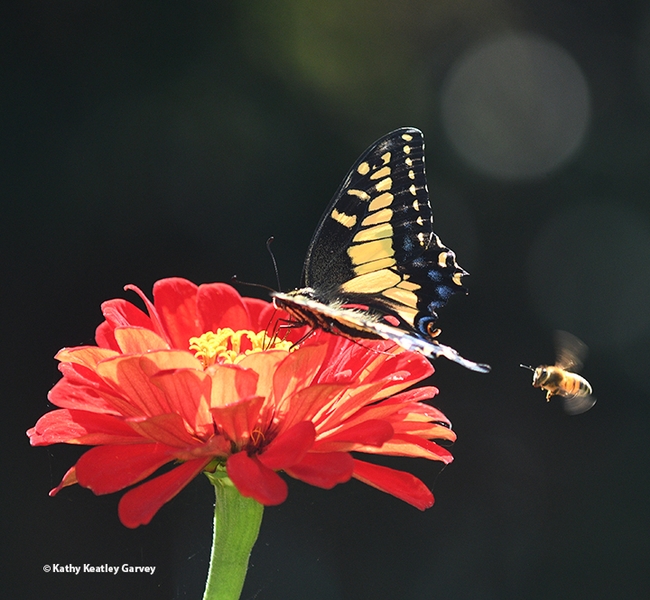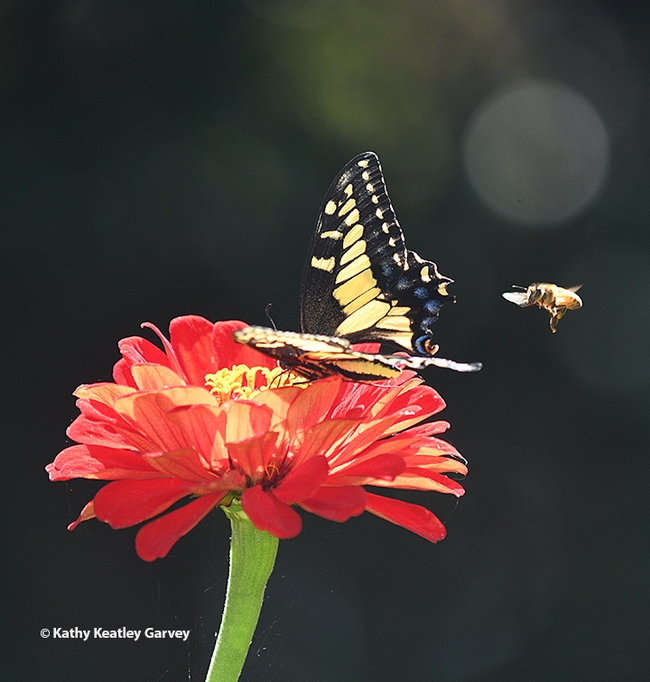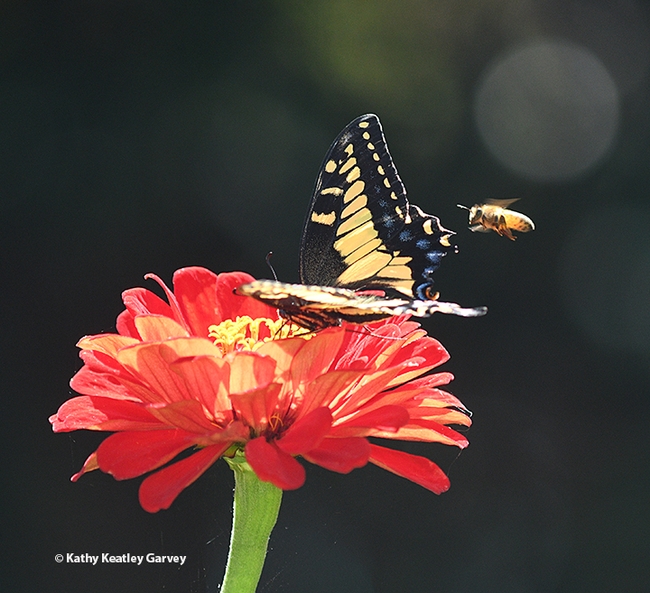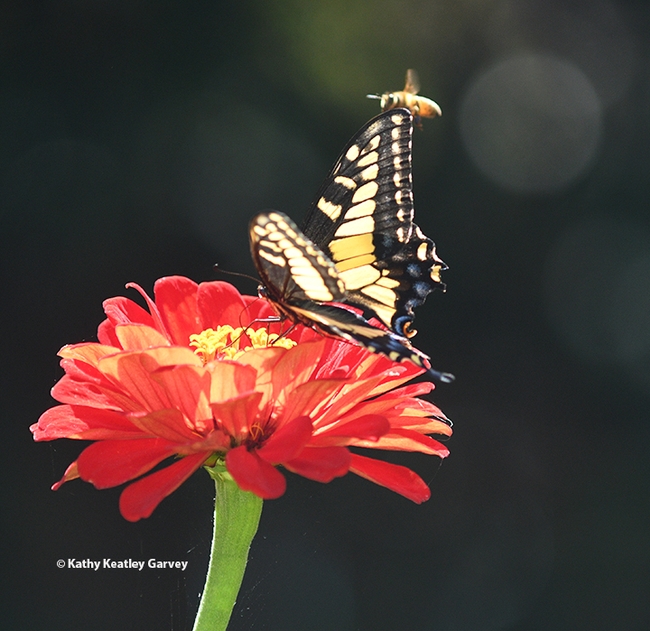An Anise Swallowtail, Papilio zelicaon, settles on a red zinnia in a Vacaville pollinator garden and begins sipping the nectar.
A honey bee buzzes by.
Was she just passing through or did she want the same nectar?
The bee brushes the butterfly's wings. Okay! I'm leaving!
Score: Bee, 1; butterfly 0.
Anise Swallowtails, according to UC Davis emeritus professor Art Shapiro, "have several generations (late February or March-October) and breed very largely on Sweet Fennel (Anise), Foeniculum vulgare, and (in the first half of the season) Poison Hemlock, Conium maculatum. Both of these are naturalized European weeds."
Shapiro, who retired this summer from the Department of Evolution and Ecology, has been monitoring the butterfly populations of Central California since 1972. He maintains a research site, Art's Butterfly World.
The images below were captured with a Nikon D500 camera and a 200mm macro lens. Shutter speed: 1/2000 of a second, f-stop, 4; and ISO, 800.
Attached Images:

An Anise Swallowtail, sipping nectar from a red zinnia, seems unaware of a buzzing honey bee. (Photo by Kathy Keatley Garvey)

Anise Swallowtail: "What great nectar!" Bee: "I want some, too!" (Photo by Kathy Keatley Garvey)

Anise Swallowtail: "This nectar is great." Bee: "Are you sharing or moving or what?" (Photo by Kathy Keatley Garvey)

It's touch and go! The honey bee, Apis mellifera, touches and the Anise Swallowtail, Papilio zelicaon, goes. (Photo by Kathy Keatley Garvey)